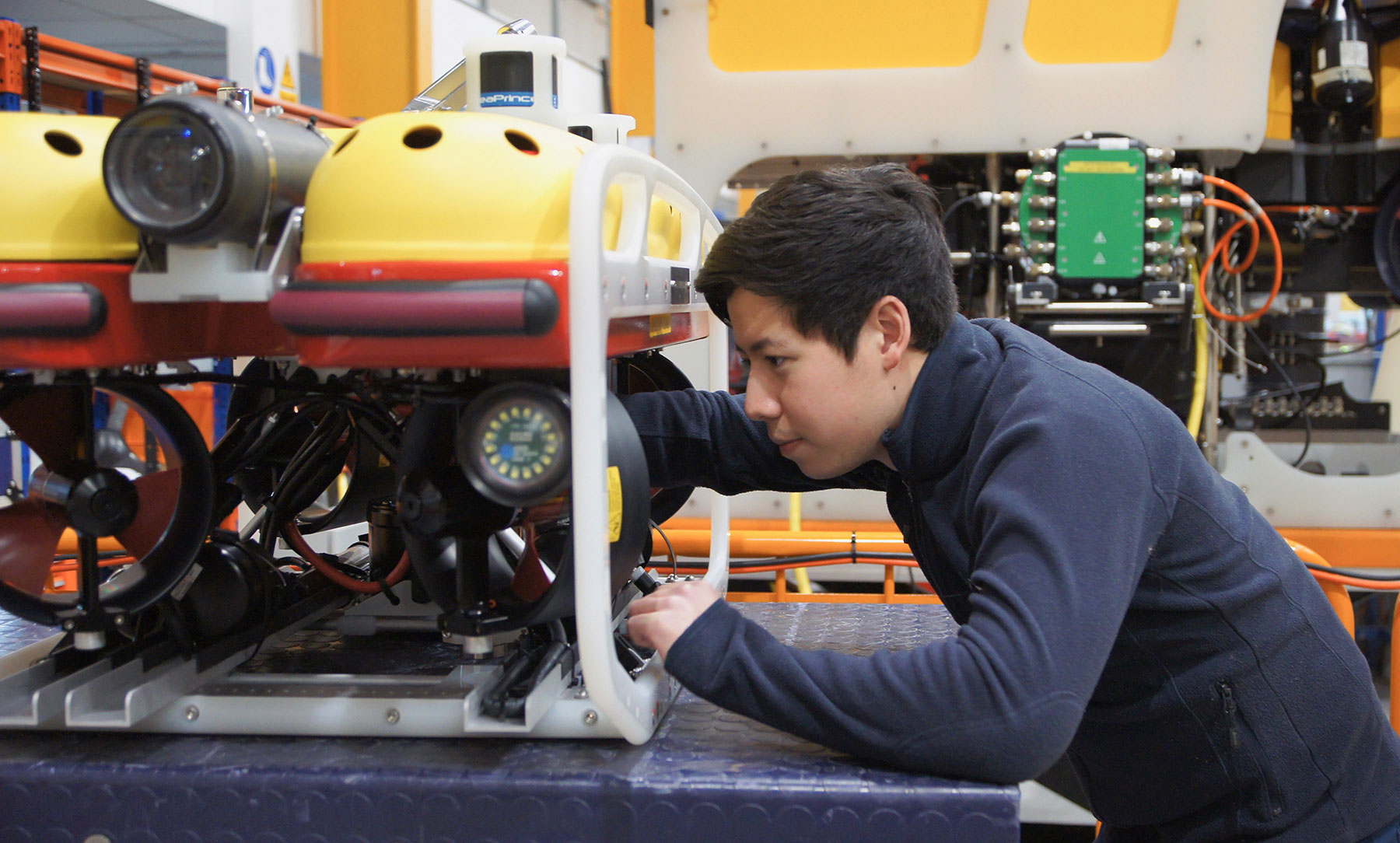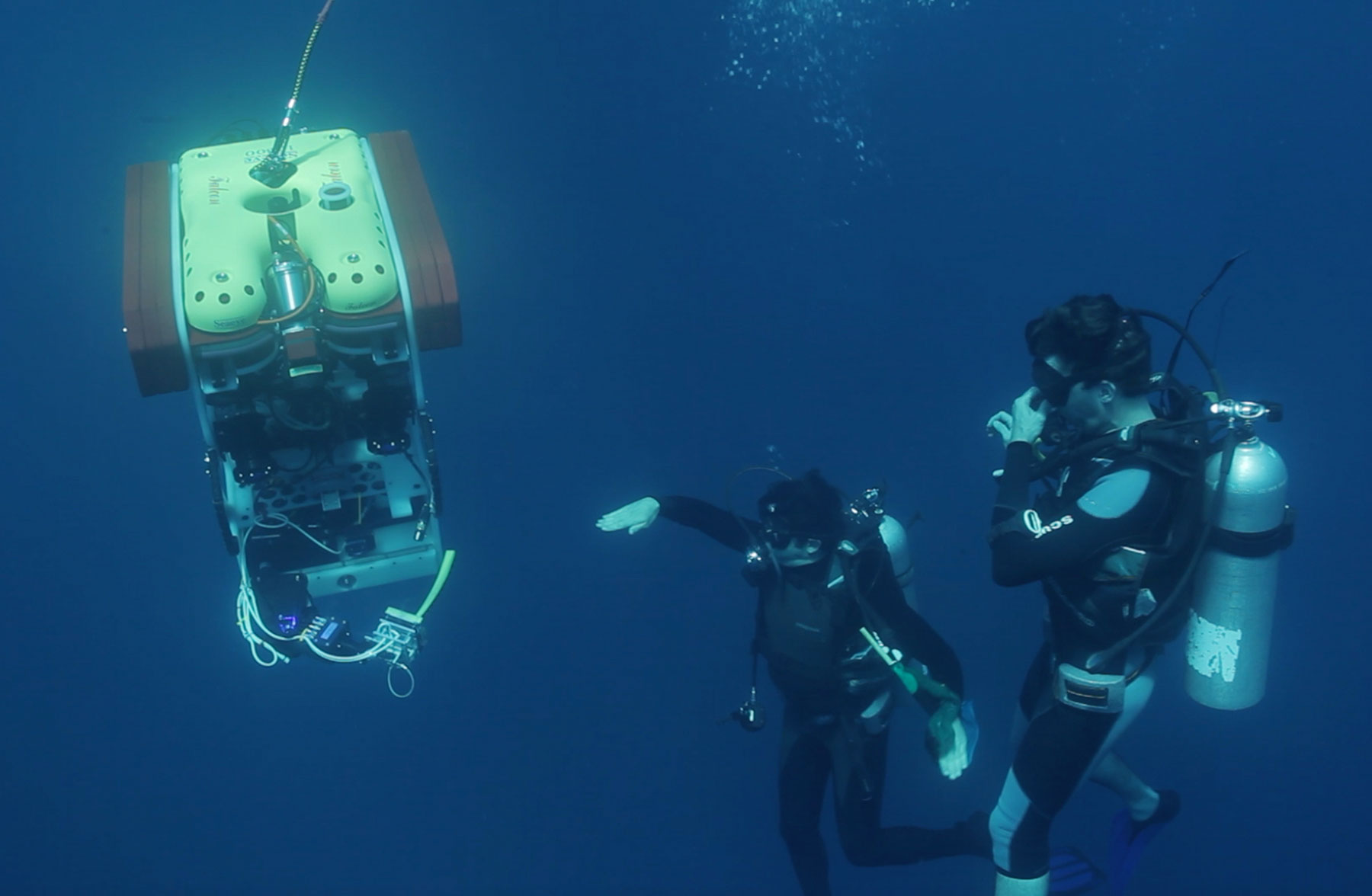
Voted top educational vehicle, the Falcon is easily adapted to a wide range of applications.
IOS lists ten of the best educational ROVs to help potential buyers, using the following criteria:
Captain Marc Deglinnocenti, reporting in International Ocean Systems, says:
“Congratulations must go to Saab Seaeye, UK, for heading our list with the excellent Seaeye Falcon DR vehicle. The company ensures that all of its ROVs stay highly competitive, and the Falcon DR is an ROV that represents this philosophy by having a fibre optic tether as just one example. It’s priced at the 300-metre ROV level, however this ROV has a 1000-metre depth rating. Its power supply plugs into a simple single phase 110- or 230-volt AC wall socket. That gives it an unlimited dive time that’s easy to operate with its touchscreen and joystick controllers. The depth and heading sensors (navigation pod), two LED lights and a high-resolution colour camera are standard equipment. With a customisable data screen and a dizzying array of options, this ROV can provide hours of education and data collection at remarkable depths.
A 360-degree scanning sonar is one such option that sits on top of the ROV. Another option is a multibeam forward scanning sonar. Various types of manipulator arms are also available such as a simple three-prong gripstick, a mini cutter arm, a cleaning brush arm or a sophisticated manipulator arm skid. A metal thickness gauge, Doppler velocity log for auto station keeping, a laser scale, a CP probe to measure electrical currents, an altimeter to measure the distance above the seafloor, and a GPS tracking system are some more options. Many more options are available. The ROV is built in the United Kingdom, and maintains a high resale value, but you can get a basic new one for about US$150,000 (£114,248). Tether lengths and controllers are extra.
I operated the Falcon DR at Global Diving & Salvage, Inc. in Seattle, Washington, USA, to see for myself how this ROV handles. The extra large diameter thrusters supplied a remarkable amount of power for its size. The controller functions are adjustable, so you can fight heavy currents with robust control settings and then switch to more sensitive controls for delicate work all within the same dive. The ROV tested also had semi-autonomous capabilities. This ROV also stood up to some very heavy-duty use by Global Diving & Salvage, and it should be tough enough for your educational uses too.
Educational institutions should invest in one of these ROVs. The brands listed here also offer even more sophisticated models if your budget allows. With most of Earth’s surface covered in water, it’s important to teach our students about that portion of our planet. Using an educational ROV is a great place to start.”
.jpg)
Graduates and scientists from the Memorial University of Newfoundland prepare a Falcon as a development platform for the study of iceberg behaviour in shallow water.

Scientists from the City University of New York equip a Falcon with Hollywood grade camera technology for seeking out bioluminescent organisms.